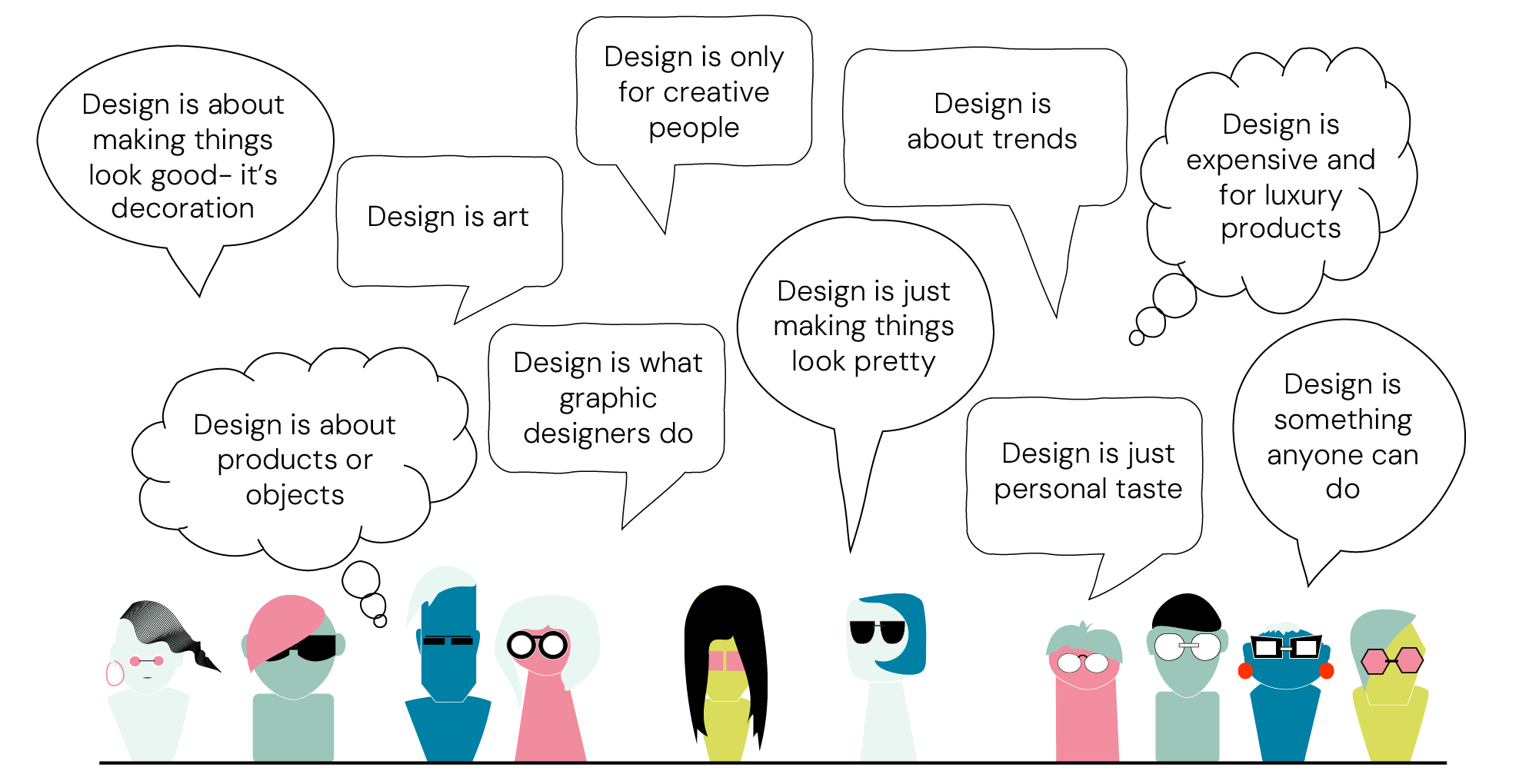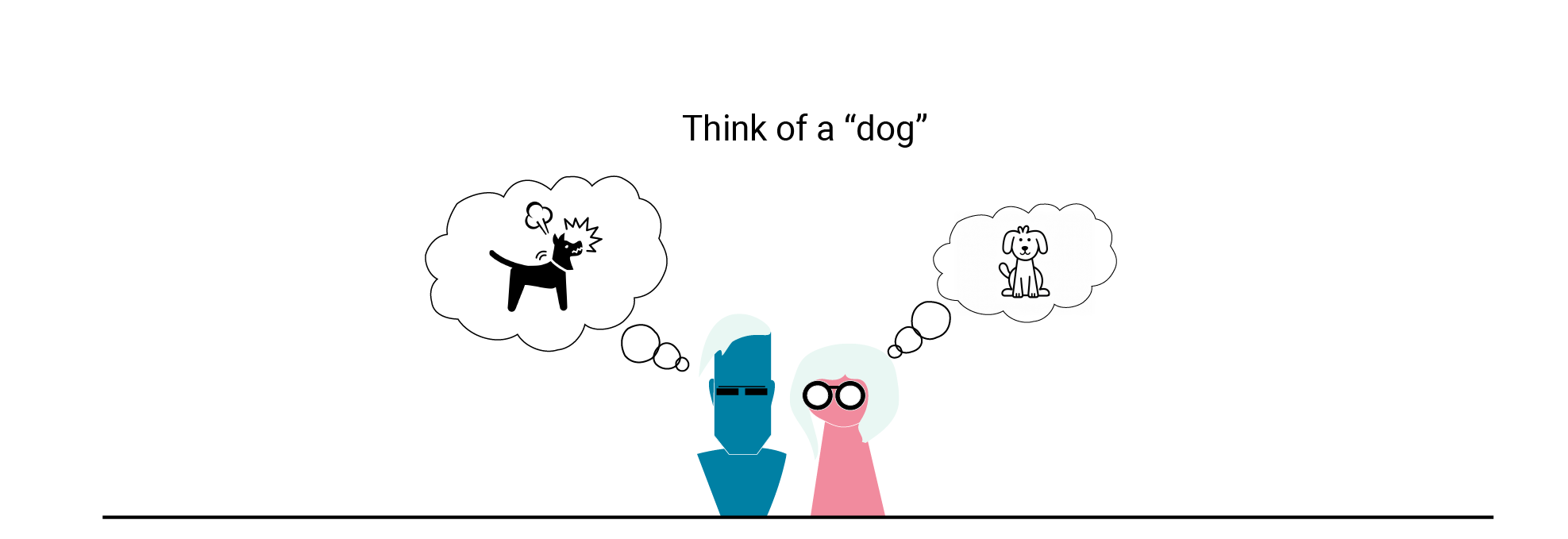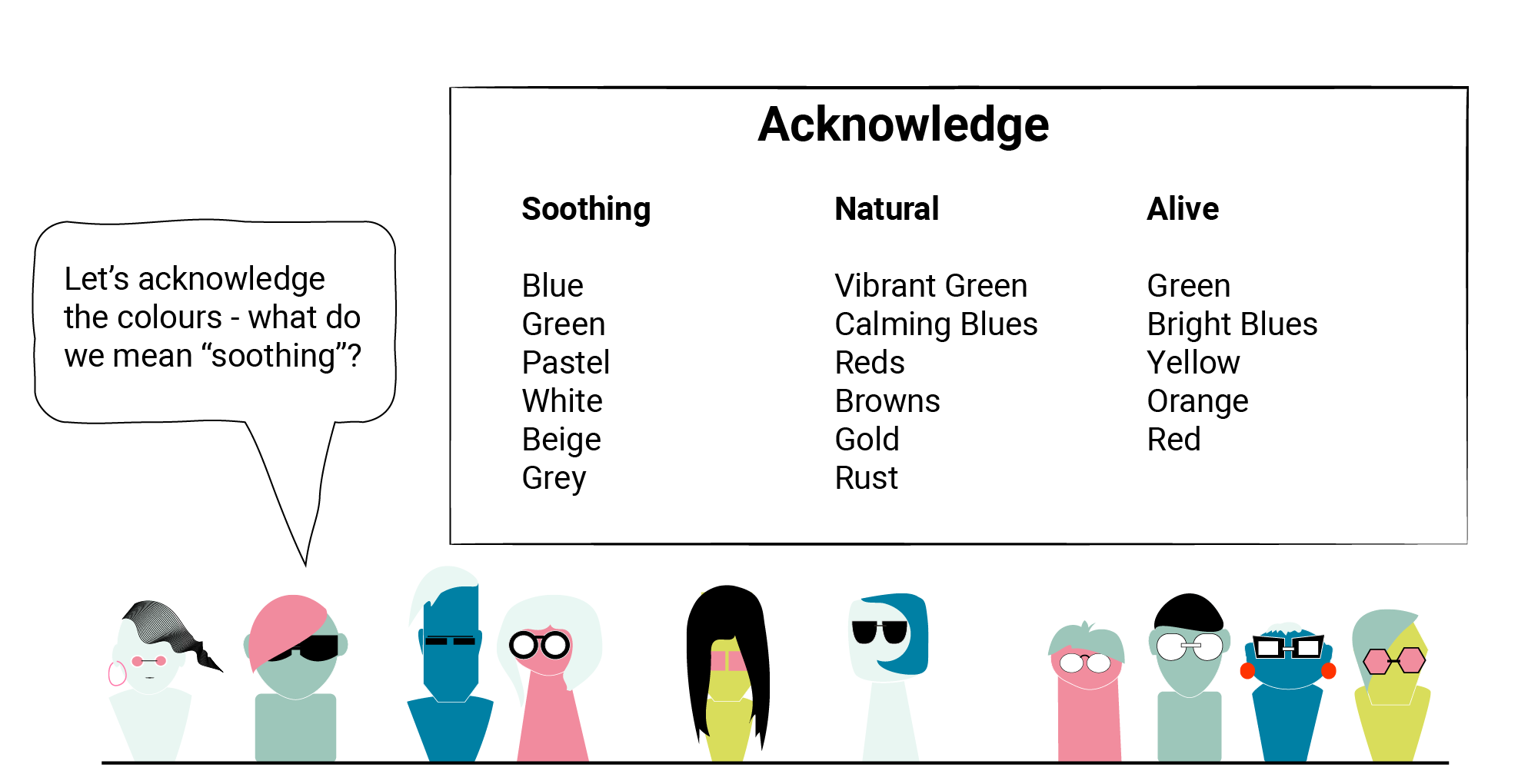
Even when we say the same words, we don’t always say the same thing!
AAVA offers a practical way to build shared meanings of words and help people collaborate and work in teams more effectively. Let’s break it down.
1. Accept
Before having better conversations, we must accept that not everyone shares our worldview of even common words.

2. Assumptions
We all assume others understand what we mean—but they often don’t. If even common words such as design can cause miscommunication, so words like “strategy,” “brand,” or “UX” certainly could.
When we make assumptions about what others are thinking, we set ourselves up for confusion, frustration, and missed opportunities.

3. Vocabulary
Words matter—but only if we agree on what they mean.
The same word can have different meanings depending on who says it, who hears it, and the context in which it’s used.

4. Acknowledge
Acknowledging our meanings makes shared meaning visible.
Whether through a glossary, a shared doc, or a quick check-in during a meeting, acknowledge the meanings you’re working with.
This isn’t about endless debates; it’s about making sure everyone is on the same page before you move forward.
Taking a moment to unpack what we really mean by a word can save hours of miscommunication later.

The Result?
Fewer arguments. More progress. Stronger outcomes.
You don’t need to understand all the philosophy to benefit from the framework, but it’s there, under the hood, adding depth and credibility.
AAVA is a mindset. Once you start using it, you’ll see it everywhere—from project meetings to family conversations.
© 2021 Jan Jervis All Rights Reserved. AAVA is Licensed under CC BY-NC-ND. You may use this framework as long as it is for non-commercial purposes; nothing has been changed; you credit the author and include this copyright notice and web address: www.janjervis.com.au.
